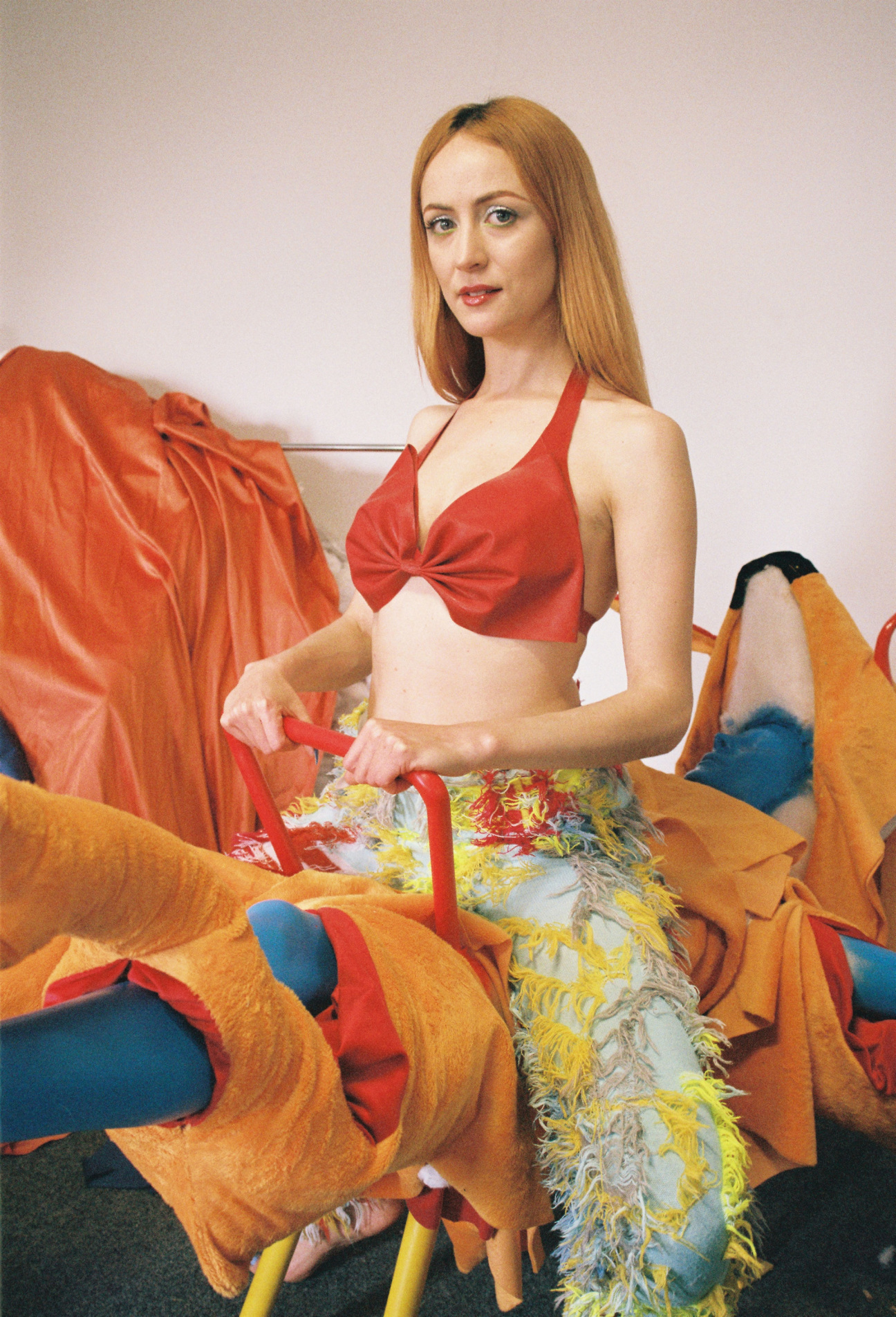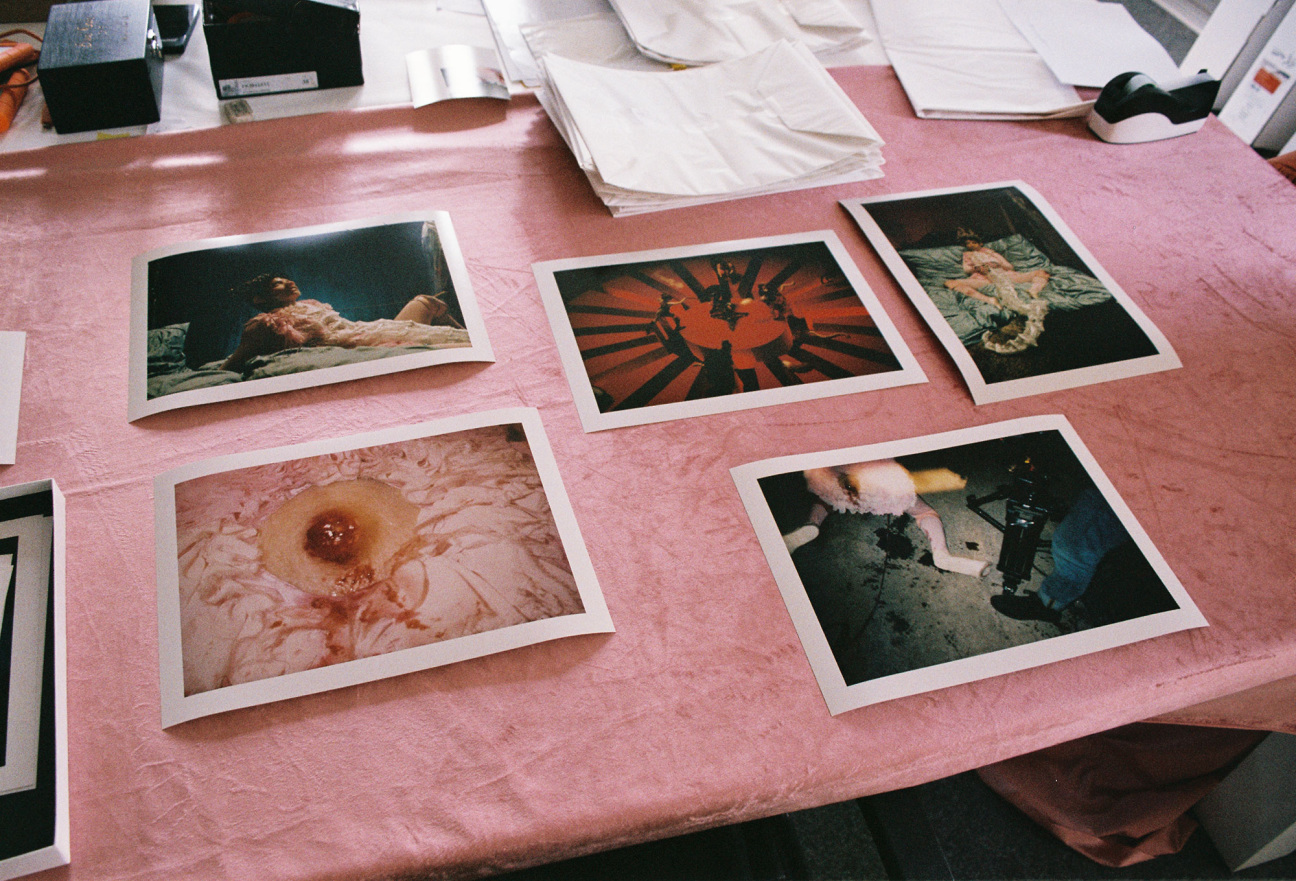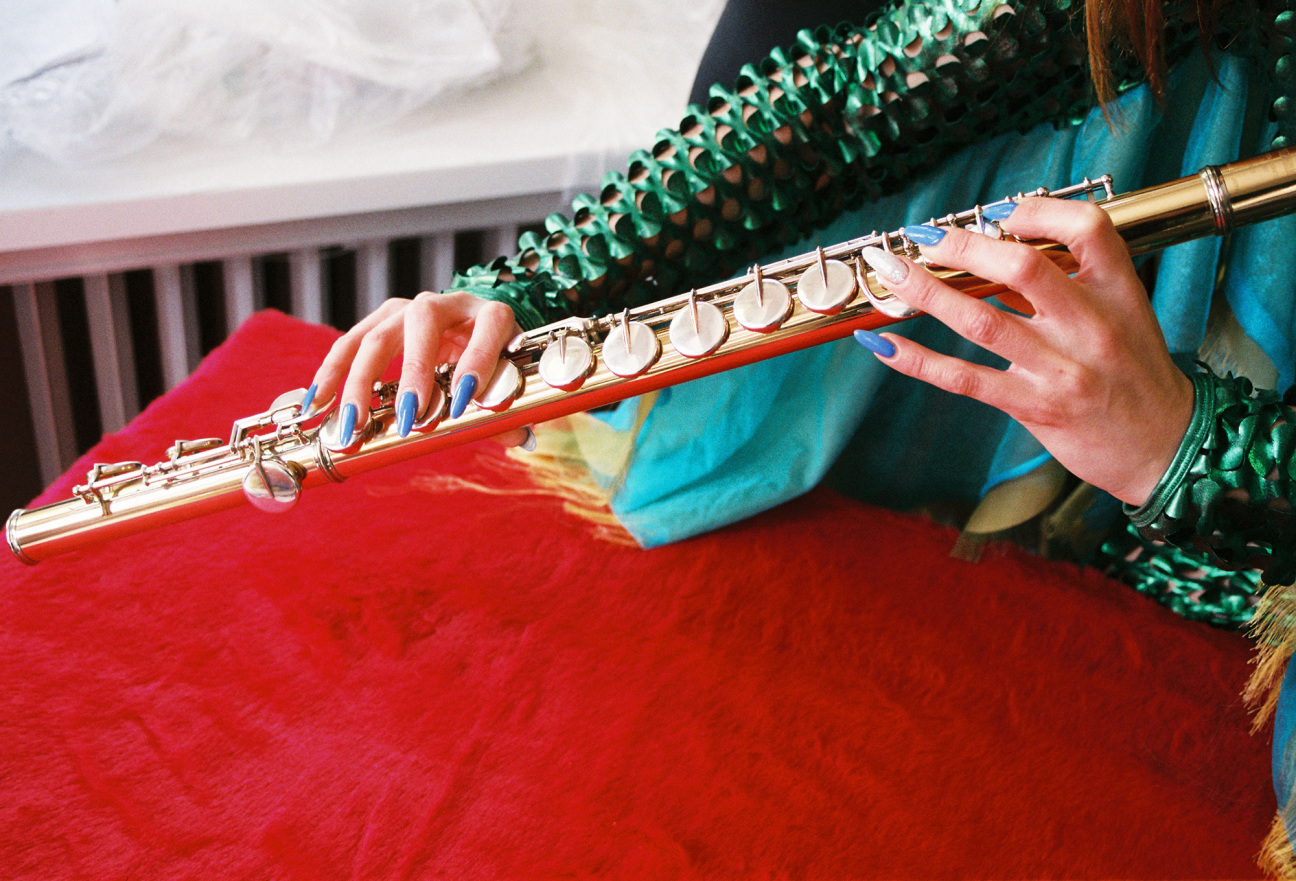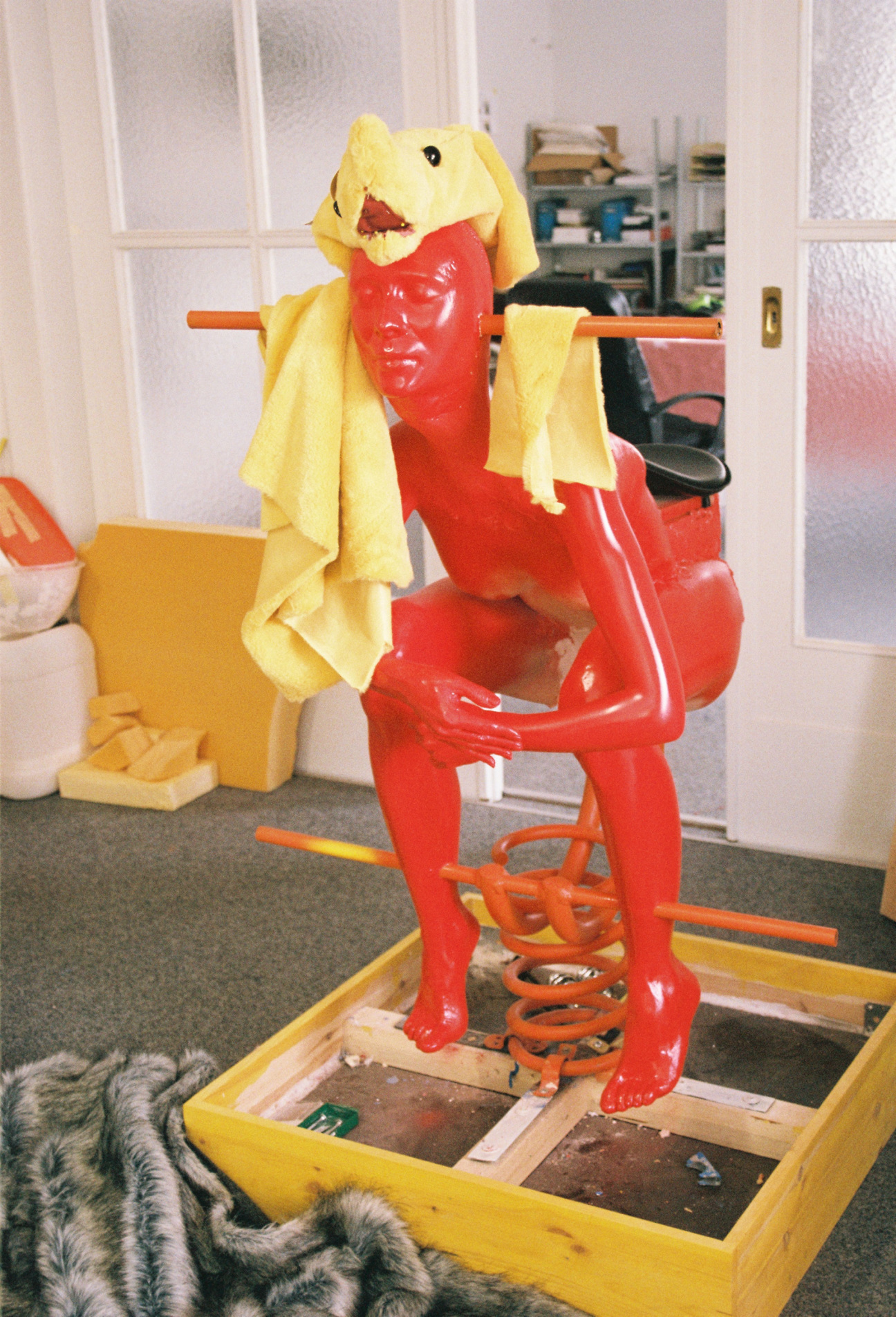A furry, oversized tail pokes through a pair of red velvet curtains, beckoning us to enter. Like Hansel and Gretel following their breadcrumbs, this sumptuous 75-foot tail lures the viewer into the wild and opulent world of The Severed Tail (2022), an immersive three-channel video installation made by Marianna Simnett for “The Milk of Dreams” exhibition at the 2022 Venice Biennale. The show is curated by Cecilia Alemani, who chose its title after the children’s book by surrealist artist and writer Leonora Carrington. Simnett’s engagement with the slippages between species and metamorphic, psychic and scientific instances of bodily transformation, fittingly embodies what Alemani has dubbed “the bizarre union of [the] human, animal and mechanical” in Carrington’s oeuvre.
Simnett has probed the interconnectedness of human and non-human beings during the last decade, displaying corporeality in numerous abject, visceral and squeamish iterations. The Severed Tail centers on the idea of tail loss, instigated by studying the controversial practice of animal tail docking, a traumatic impact of overbreeding. In her anti-heroic, fable-like narrative, which follows a piglet’s epic journey, Simnett explores gender and empowerment along with the dissolving boundaries between species and the repossession of our animal selves through instances of fetish, performance and play. “Living in Berlin has been very influential. People live outside of their own skins here,” the British-Croatian artist says. “There’s a beautiful and safe atmosphere of love, care and solidarity within the role-play and fetish club scene, like the Pup Play community I immersed myself in as part of my methodology.” Along with the work of Carrington, Simnett’s numerous influences include Samuel Beckett, Angela Carter, Hans Christian Andersen and Marina Warner. “I’m very choosy about what I want to read, I make sure it’s a weird list,” she notes. “I also read academic and scientific essays about tail docking and early experiments on mice, looking at tail mutation genes and cell divisions.” The dramatic crescendo of the 20-minute long video was informed by seahorse sex and mating practices, with Simnett explaining how she was inspired by how, “in the natural world, the female deposits the eggs into the male pouch, then the male fertilizes the eggs and gives birth.”




Before The Severed Tail, Simnett was working on the 16mm film Prayers for Roadkill (2022), currently exhibited in “ESPRESSIONI CON FRAZIONI” at Castello di Rivoli in Turin, Italy. Here, she initiated a labor-intensive and almost intolerable process of collecting, cutting up and stuffing roadkill, to then animate them in a series of humiliating and nightmarish stopmotion episodes shot on vivid Ektachrome color reversal film. Simnett describes these films as “deliberately strange and seductive, in contrast to earlier hard-edged works.” Their cute, cartoony appearance, akin to a perverse interpretation of the Looney Tunes, questions “the ‘fun’ violence that was deemed safe for children to watch,” despite enacting vile, disturbing scenes, such as one enacting shaken baby syndrome. “This was made in the spirit of DIY and punk. I wanted to torment the viewer into thinking about what we deem acceptable,” she says. “Why is one death is more important than another?” For viewers to watch the film, she made furniture in bold primary colors, comprised of sculptural casts of her body emulating the positions of killed animals. “They’re on rocking bases, which creates a synergy between self-soothing practices and mania, with that gesture of madness also mirroring the loop used in animation.”
“I’ve never wanted to make something beautiful, shiny or aesthetic. That’s just not what I’m interested in. I’m often misinterpreted as being very shocking, but I’m not creating sensational or slapstick horror,” she says. “I’m drawn to the violence that we inflict on others, on animals. Through all my work is the pervasive entanglement of ourselves and the other: how do we decide who is the other and who is ourselves?”










 in your life?
in your life?

